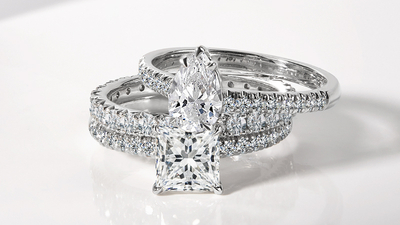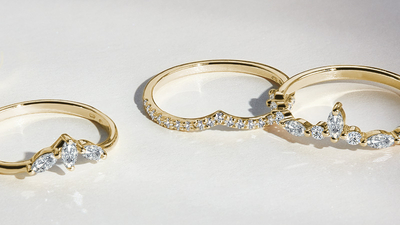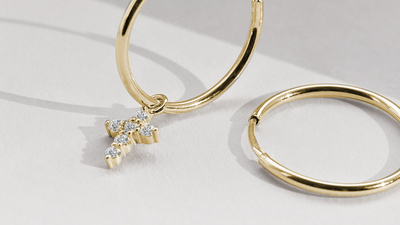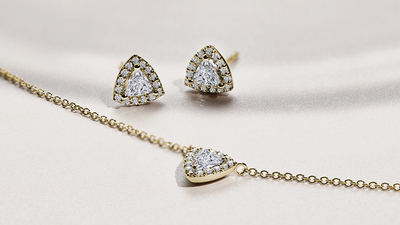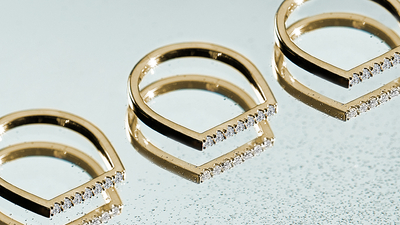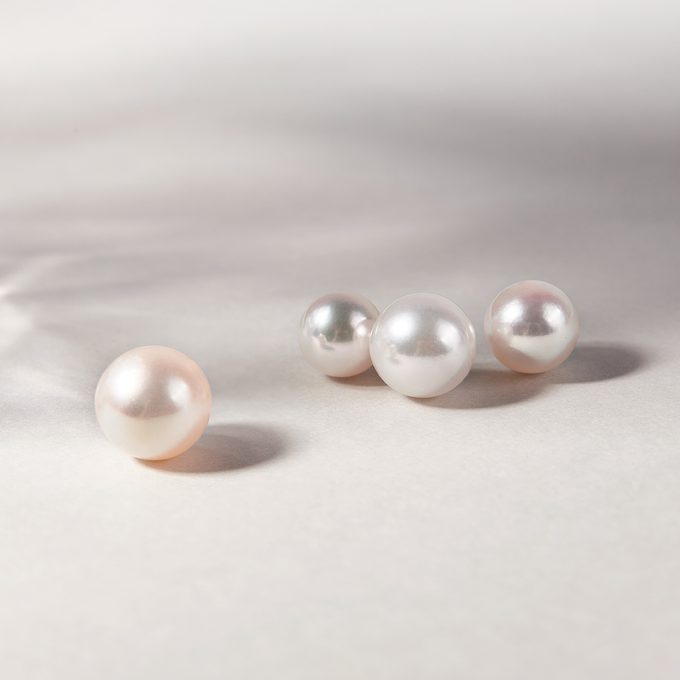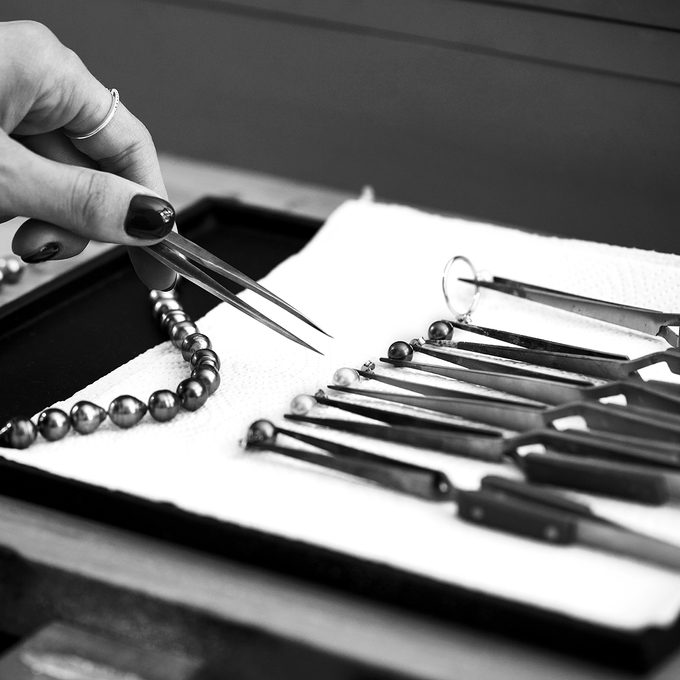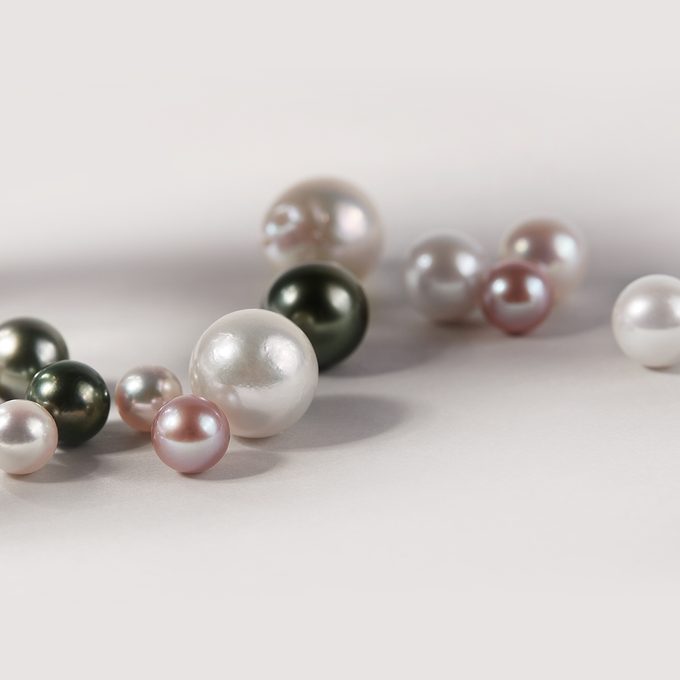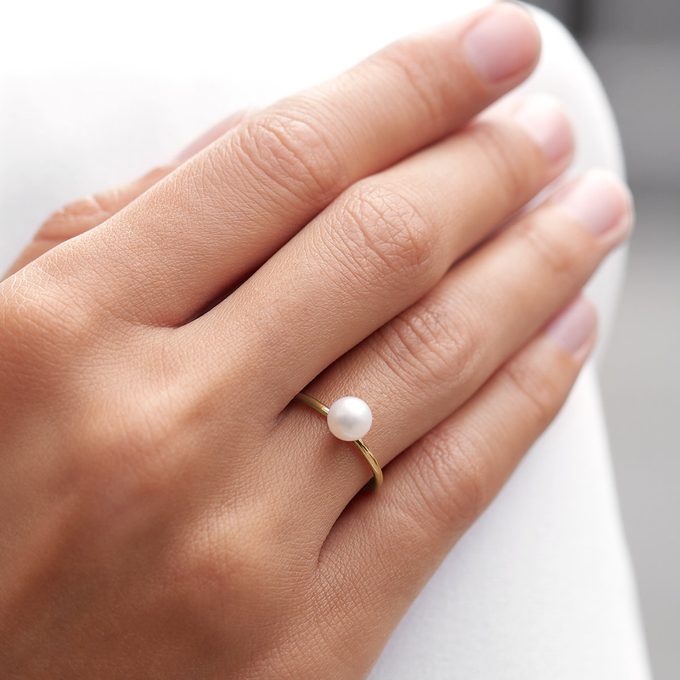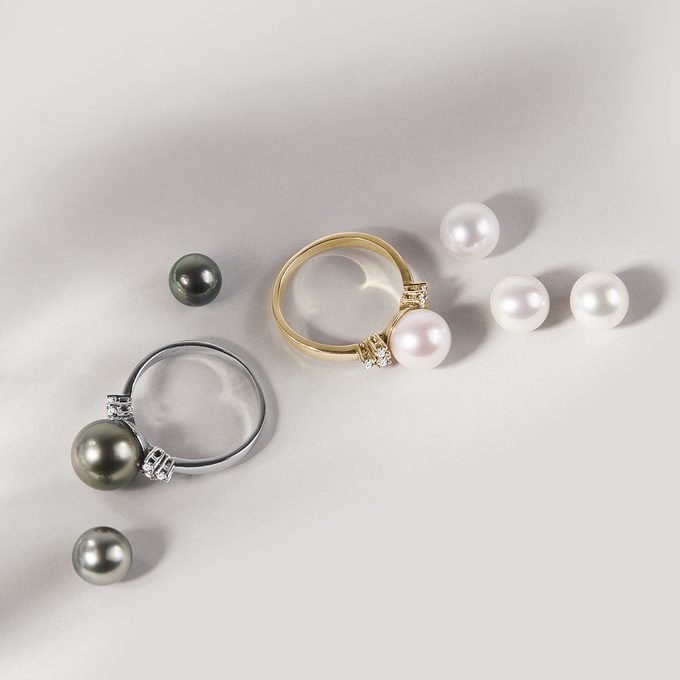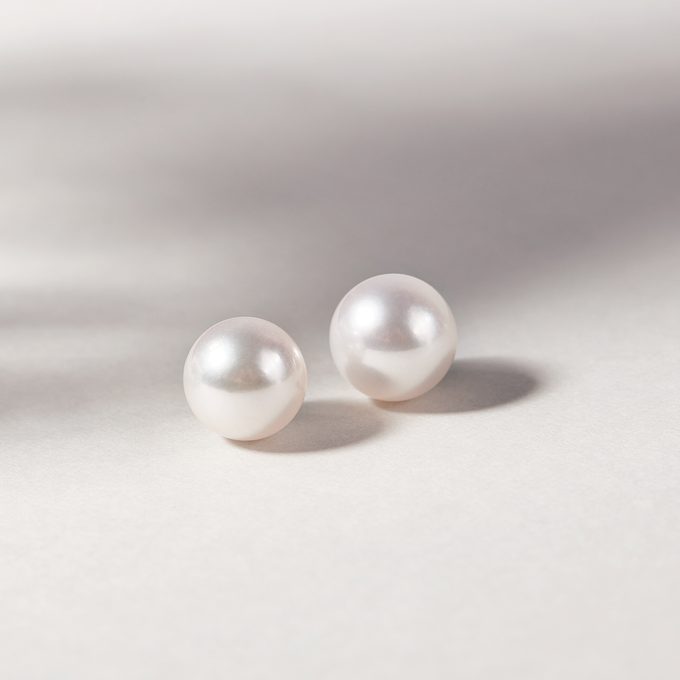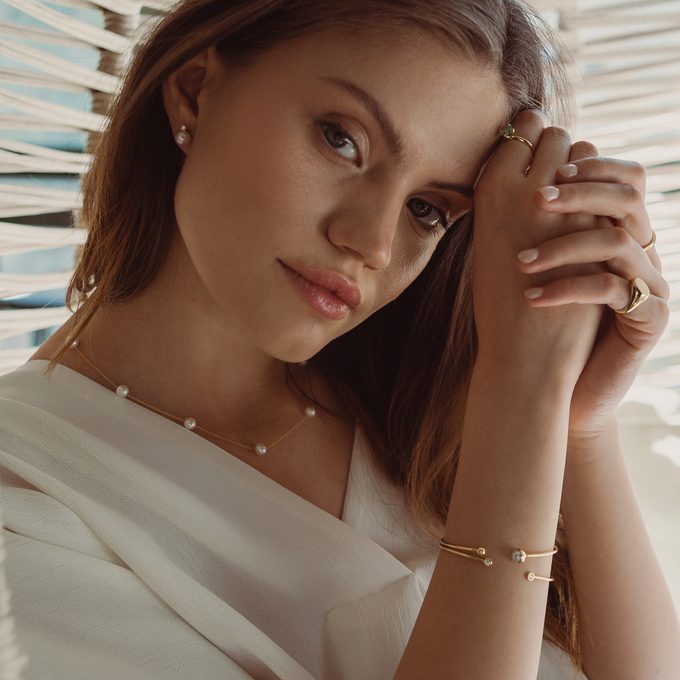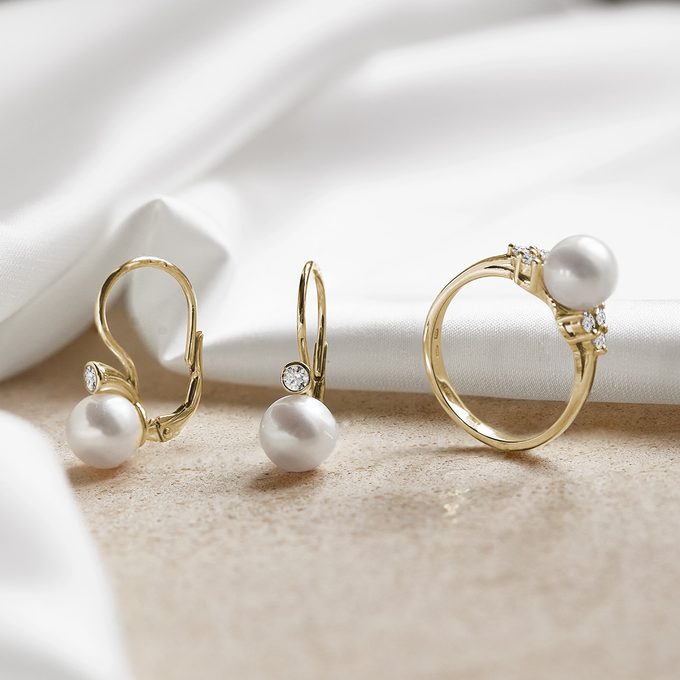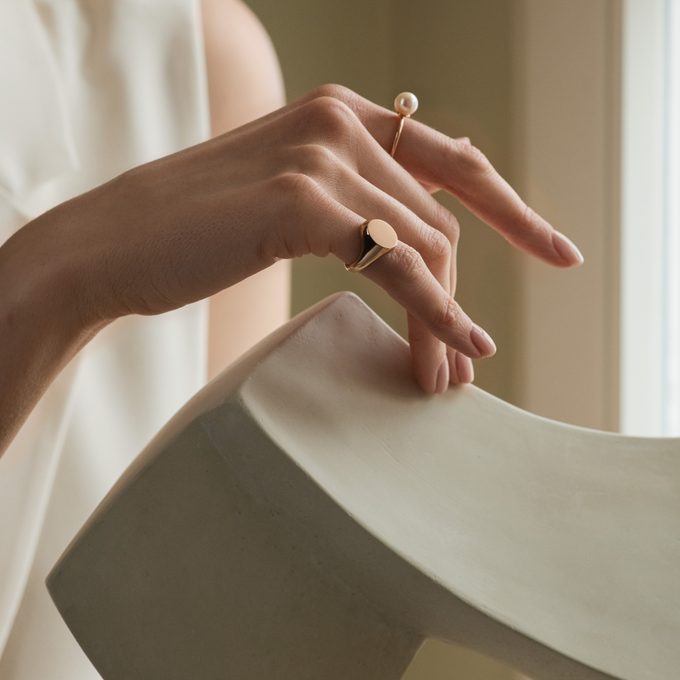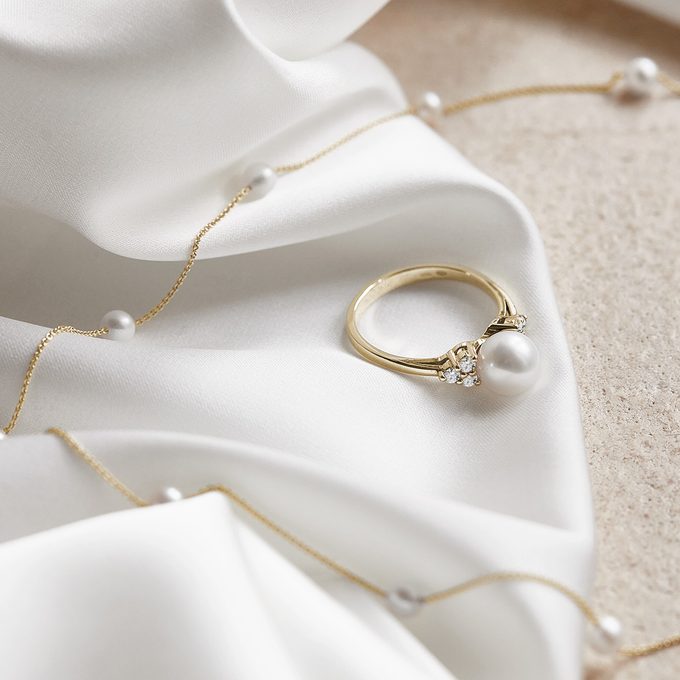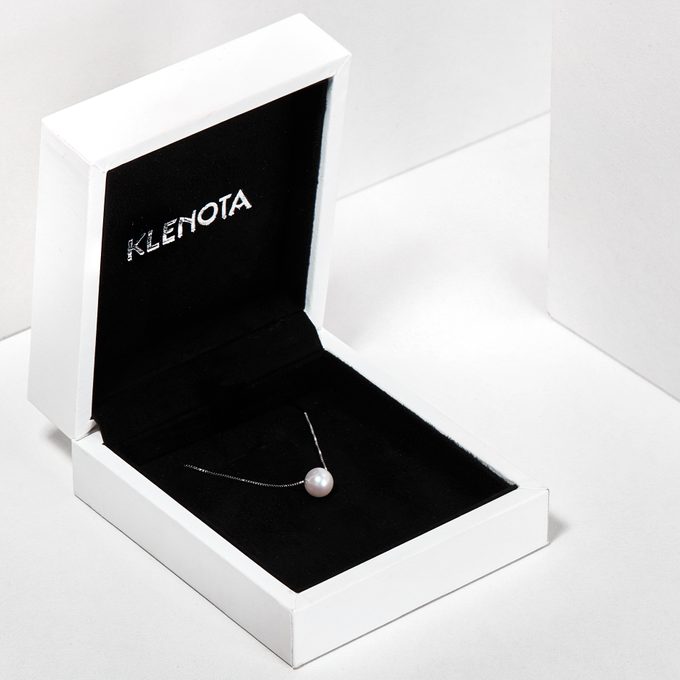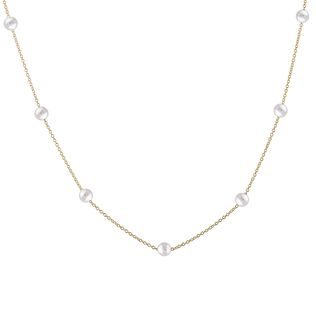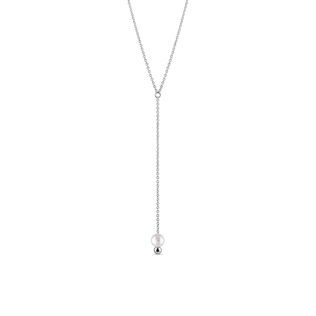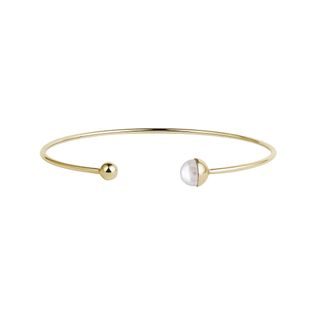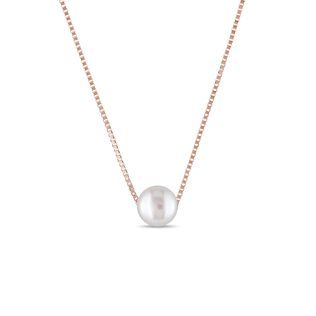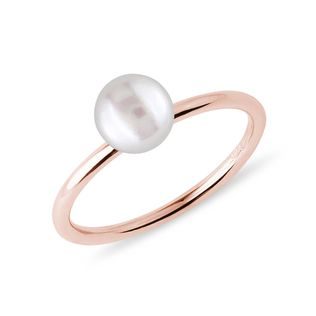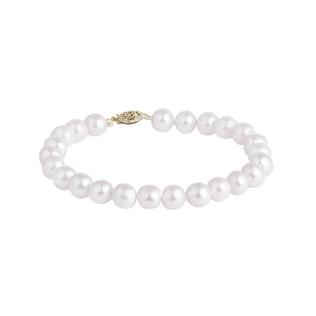Everyone probably knows that no two pearls are alike. Pearls are "living gems" with a lot of variety which can be divided into several groups. Today we will focus on river pearls which are also known as freshwater pearls, in other words, those "made" by freshwater mussels. We will look at their characteristics, how they differ from saltwater pearls and how best to look after them.
But first let's clarify the basic terms which often get confused. Pearls can be divided into real and fake, natural and cultured as well as freshwater vs. saltwater. Natural and cultured pearls (both freshwater and saltwater) are all considered to be genuine pearls. Fake pearls are made of glass, ceramic or other materials. They were not created organically in a mollusk and do not have the same properties as genuine pearls. Genuine natural pearls which have not been cultured are extremely rare there days and are also very expensive. Moreover, they rarely achieve the ideal quality which is needed for use in jewelry. So in pearl jewelry, you will almost always come across cultured pearls.
Where do freshwater pearls come from?
Pearls are not classified as minerals. They occur as a byproduct of a type of defense mechanism in some species of mollusks against a foreign body that is inside their shells. The principle of how natural and cultured pearls form is the same. When a foreign body, in nature perhaps a grain of sand or a tiny pebble gets inside the shell, the mollusk begins to coat it with nacre so that it becomes nicely rounded and its presence is not so unpleasant for the mollusk. But not all mollusks know how to do this. Of the freshwater species, the most important for pearl creation are the freshwater pearl mussel (Margaritifera margaritifera) and the Unio freshwater mussel. However due to the pollution and regulation of waterways, pearl mussels have become extremely endangered. From the exotic freshwater mollusk species, it’s worth mentioning for instance the Hyriopsis cumingii.
With pearls that are cultured, a seed is intentionally inserted in the shell. With freshwater pearls this is a piece of mantle tissue and the mollusk then gradually coats this in nacre. The seed is thus the center of the future pearl and its planting inside the shell begins a 2-7 year process, at the end of which is the finished freshwater pearl. A similar process is used for saltwater pearls, but a different seed or bead is inserted into the mollusk. The main factor that influences the final shape of the pearl - especially the color, shape and quality of the nacre - is the environment in which the mollusk lives.
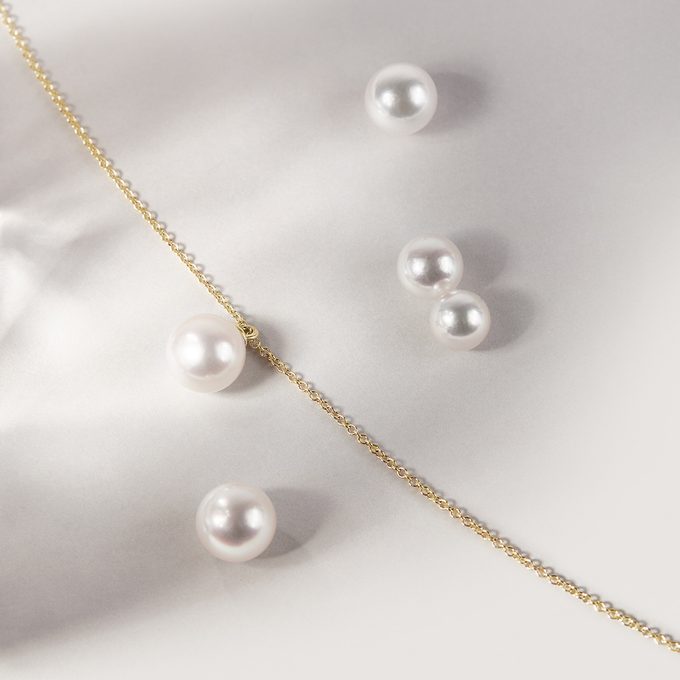
The grading of pearls
A characteristic of natural and cultured pearls is their uniqueness. Each pearl is an original and each has its own value. There are grading systems that help determine the value of a pearl, however the final price is the combination of several basic factors: size, color, surface and luster.
You’ll most often come across the grading system of AAA–AA–A. The more "As" a pearl is graded, the higher the quality of the pearl. The + is also used to give an even more accurate rating. Thus, an AA-A grading is written as A+. However some sellers, mostly from Asia, use a larger scale, such as A-AAAAA, where the AAA rating is not the best, but just average. This can be confusing, so you need to be careful which grading mechanism the pearls have been graded on. There is another scale used in America that rates pearls on a scale from A-D, where A corresponds to the highest quality.
The properties of freshwater pearls
The SIZE of pearls is measured in millimeters and it denotes their diameter. The diameter of some saltwater pearl species can be up to 14 mm and on rare occasions even more. Freshwater pearls however are generally smaller. Their size ranges from 2.5 to 9.5 mm. For sizes above 9 mm, the price starts to rise steeply due to their rarity. However size is not the most important thing that makes a pearl valuable. If a pearl is large in size but of inferior quality in other respects, its appeal and price won’t be very high. It is therefore important to look at other parameters as well.
The COLOR of a pearl will catch the eye at first sight. The color range of freshwater pearls is relatively wide and it ranges from white, cream, pink, salmon all the way up to violet and lavender. These are the only colors that a freshwater mollusk can produce naturally without any help from people. Of course there are also other colors which are sold on the market however brown, black, blue or green freshwater pearls are created by artificial coloring and their price should reflect this. When it comes to color, we look at whether the pearl has an even color and whether it has any spots of color on it but in some pearl varieties, these “spots” may be desirable. When choosing a color, we recommend that you follow your heart.
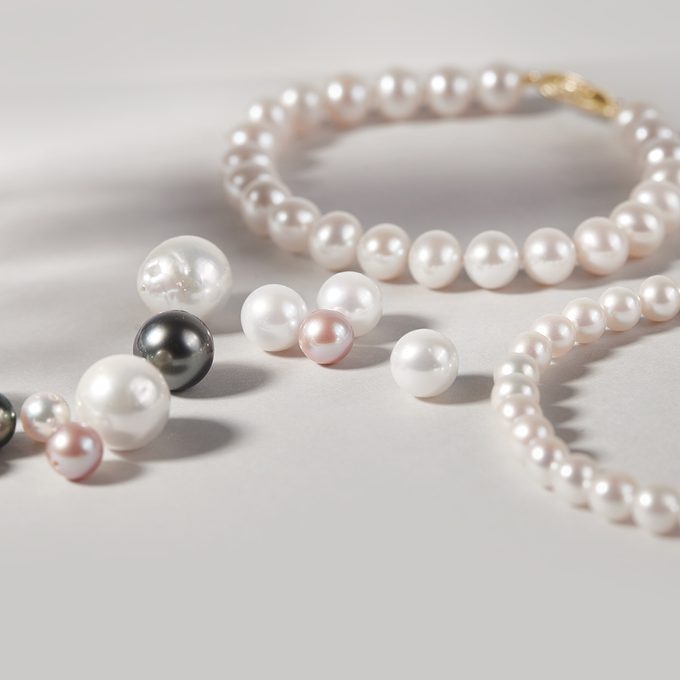
The LUSTER of a pearl goes hand in hand with its color. It is graded using many categories that only true experts can navigate. As a form of a very simplified grading, let’s consider the following three grades: high luster, satin-like and a dull or matt luster. The first two are desirable, but a pearl should definitely not give off an impression of a matt finish. A quality pearl should shine. It should reflect light with high intensity from its surface and it should glow from within its center. Such a pearl is high quality and gives off a very vibrant impression. The quality of the nacre - and therefore the luster - is influenced by the environment and health of the mollusk, the length of time the pearl has been growing as well as other factors. Freshwater pearls always have more nacre than saltwater pearls, but their luster will tend to be silky, and they will therefore shine a little less.
The SURFACE of pearls is the fundamental indicator through which we can distinguish between genuine and cultured pearls. No genuine pearl, whether natural or cultured, is perfect. It was created inside a living organism that gradually shaped it. Its surface therefore contains various ridges, depressions, protrusions and other imperfections. These make it unique, but also less valuable. Therefore, the smoothness of the surface is also taken into account when determining the value of pearls. On the other hand, if a pearl has some kind of imperfection, it makes it more affordable. A small imperfection can then be cleverly hidden so that it is not visible on the jewelry at all. Almost all pearls have some surface imperfection, and if they don't, their price is astronomical. The surface of pearls can even be striated, making it look as if the pearl has some sort of belt around it.
The last characteristic that makes a pearl stand out to us is its SHAPE. Freshwater pearls come in a variety of shapes. The most prized are of course perfectly round pearls with a smooth, lustrous surface and a uniform color. The more perfectly round the pearl, the higher its price. Irregular shapes, on the other hand, are valued for their degree of symmetry. In addition to round pearls, there are also oval, baroque and coin-shaped pearls, as well as pear or drop shaped ones.
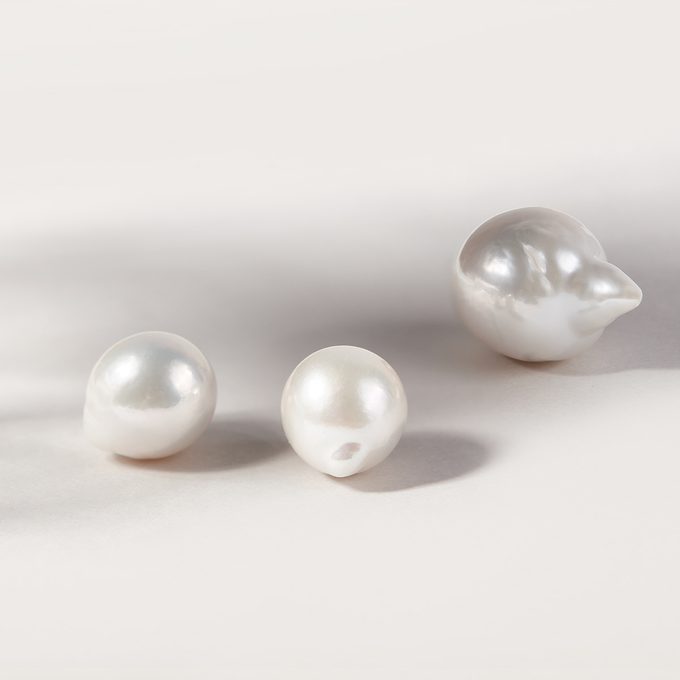
Special types of freshwater pearls
Keshi pearls were actually created by accident - as a by-product of pearl cultivation. For example, if a mollusk rejects the seed and expels it, but still produces nacre, the resulting pearl is called a keshi pearl. It is also often produced in different parts of the mollusk than intended. Originally, only certain saltwater Akoya pearls were designated as keshi pearls but now freshwater pearls are also referred to as such. Keshi pearls are irregular in shape with various protrusions and do not have a nucleus. Due to the lack of a nucleus, they are not considered to be natural pearls, but they are in fact superior to pearls with a nucleus. They are tougher, therefore more durable, they have more vibrant colors and a greater luster. Round keshi pearls are the rarest. They represent only 0.01% of all keshi pearls and are sold according to their carat weight.
Among the largest cultured freshwater pearls is a relative novelty called Edison pearls. They were introduced in 2010 by a group of Chinese companies who spent five years collaborating with a local university, experimenting and developing a culturing process. The group has a patent for their production and works with only a few dealers. That is why you will not find Edison pearls in regular jewelry stores. Similar looking pearls which are however produced by other companies include Ming, Kasumi and ripple pearls. Edison pearls can be up to 20 mm in size because they are grown in pearl mollusks one at a time which gives them more room to grow. In addition, a different nucleus is inserted into the mollusk than is usually used when culturing freshwater pearls. Edison pearls are almost round in shape and are also unique in their color and high luster.
Another very interesting and relatively new variety are “light” soufflé pearls. Their name comes from French and describes their convex shape. They came into being by accident during the development of cultivation techniques. In order to cultivate the larger pearls, the mollusk must be prepared. You have to enlarge its pearl sac so that the implantation of the seed doesn't kill it. In the production of soufflé pearls, a dried mud ball is used as the nucleus, which absorbs water and swells when it is inserted into the animal's internal organs. The mollusk coats the bead with a layer of nacre. When the pearl is removed from the mollusk, the mud is removed from the inside of the pearl and the pearl is then hollow. Soufflé pearls are irregular, have a baroque shape and are lighter than other pearls. However, the pearl layer is extremely thick and the pearl is very durable. In addition, the thickness of the nacre gives it a metallic luster and beautifully intense and deep colors.
It is also worth mentioning mabe pearls, which are cheaper compared to other pearls. They have a hemispherical shape and a slightly different process is used to cultivate them. A hemispherical seed is inserted into the shell which the animal then coats in nacre. But the pearl is attached to the inside of the mollusk’s shell. One side is therefore flat and resembles a cabochon in shape. The embedded seeds tend to be quite large. Although the nacre layer is not very thick, the resulting pearls can be larger than average in size. Unlike most of their freshwater relatives, mabe pearls are not strung into strands but instead they are used in a similar way to minerals - they are set into jewelry. This creates many new ways how to use pearls in jewelry. Mabe pearls are very delicate and stand out most when set into a pendant or earrings.
Pearls: the basis of every jewelry collection
Pearl jewelry is very personal. The lasting beauty of pearls is dependent on them being worn - they need contact with the skin which essentially polishes and impregnates them. No other gemstone requires such close contact with a person. Moreover, a pearl doesn’t have to just fulfill an aesthetic function. In some cultures, the size of the pearl reflects the social status of the woman wearing it. Ladies with a high social status or older ladies usually wear large pearls in order to demonstrate their importance.
Pearls have a wide range of uses. Some can be set into jewelry, while half drilled pearls are set into rings, earrings and pendants. Drilled pearls strung on a thread are used to make traditional necklaces and bracelets. Strands of pearls are a traditional, timeless piece of jewelry that every woman should own. They are very elegant and luxurious and you can use them on many occasions. Pearls can be stately, casual, formal or informal. Just choose the size and length of the strand that you want. Even Coco Chanel knew this and she never let a bad word be said about pearls. And so it's not by chance that pearls are part of every jewelry collection of all current and historic aristocratic women.
How to care for pearls and keep them beautiful for a long time
Caring for pearls actually starts with making the right choice when you buy them. Well-made pearl jewelry must meet certain criteria. Pearls set into bowls or a base should always be half drilled and set onto a peg. If the pearl is only glued into the bowl, it will soon fall off. The peg holds it in place and prevents it from coming loose. If a pearl does happen to come loose, thanks to the peg you will usually notice it in time as the pearl will first start to move. In this case, it’s better to have it glued back in right away. However there should be no traces of glue visible on a high-quality and professionally made piece of jewelry.
For pearls strands, necklaces and bracelets, you should first of all take note of the knots between the individual pearls. These serve a dual function: they prevent the pearls from touching and rubbing up against each other. And if the strand were to break, the pearls would not all roll down and get lost. The knots must be in between all the pearls. No exceptions - always one knot after each pearl - and they should be the same size. They must be tightened well, which you can easily check by pulling lightly on the ends of the string. If it has a touch of springiness to it and there are no gaps between the knots and the pearls, then the strand is good quality. It is also important to check the quality of the finish on the strand. A pearl necklace should look the same along its entire length.
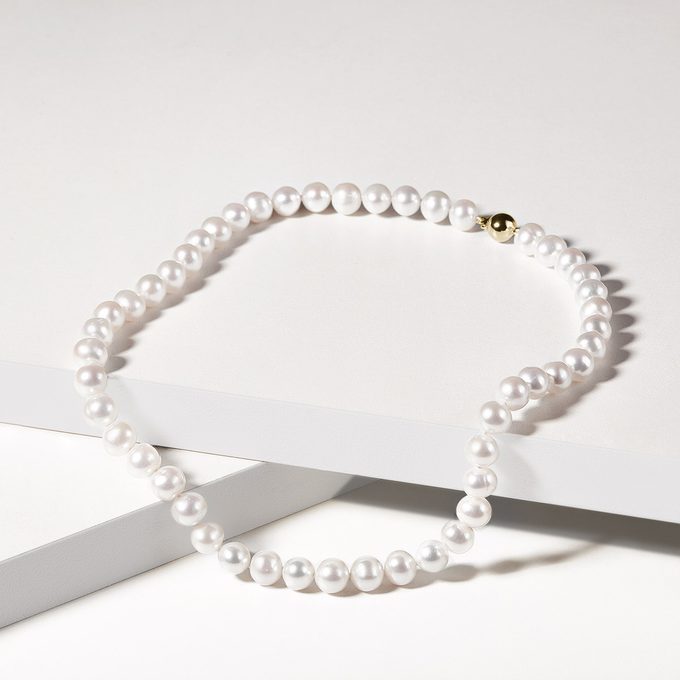
When wearing a strand of pearls, it’s important to periodically check that the thread has not started sagging. If you find gaps, it’s a good idea to have the pearls restrung immediately. Better quality strands and necklaces are double strung. To ensure a longer life for the strands, we recommend removing the pearls when bathing, swimming and other situations where they might be exposed to water. Water doesn’t bother pearls but it affects the thread which will become more brittle. The exception to this is chlorinated pools where the pearls themselves will also suffer.
To preserve the beauty of pearls, the most important rule to follow is: "put the pearls on last and take them off first." This is because pearls do not do well when exposed to chemicals such as perfumes, creams or other cosmetic products. This also relates to cleaning them. Pearls should be wiped with a damp cloth. Use lukewarm water or soapy water if the pearls are a bit dirtier. Afterwards however, the pearls need to be treated again, ideally with evening primrose oil, because removing oil from them when cleaning them is the worst thing which we can do to them. When treating pearls with oil, take care not to stain the thread. And always do this with clean hands.
Some trivia and things you probably didn't know about freshwater pearls
Today, the world's pearl production mainly comes from China. Ninety-five percent of all available freshwater pearls originate from its waters. Their size ranges from 2 to 16 mm. One pearl mussel can produce up to 20 pearls at a time which is 10 times more than a marine oyster. This is why freshwater pearls are cheaper (and also smaller) than saltwater pearls. But nowadays the price of pearls is rising steeply and this is because demand far outstrips supply; the pollution of waterways has made pearl cultivation increasingly more difficult and so production has halved in recent years. Despite the use of new technologies, it’s safe to assume that pearl prices are unlikely to fall anytime soon.

The largest known freshwater pearl is called the Sleeping Lion. It isn’t round and it has an irregular shape that actually resembles a sleeping beast or elephant. The pearl is just under 7 cm long, it weighs 120 grams and it comes from China. Its origin dates back to c.1700-1760. Since then, it has passed through the jewelry boxes of several owners, including the empress Catherine the Great. The last time this record-breaking pearl was auctioned was in 2018 when it sold for 320,000 euros.
One freshwater pearl which was found by chance and was classified as perfect is called the Abernethy Pearl. It was found in Scotland in the River Tay in 1967. It bears the name of the diver who found it. It was on display at Cairncross Jewellers for almost 30 years until it was sold in 1992. But who owns it now is still shrouded in mystery.
